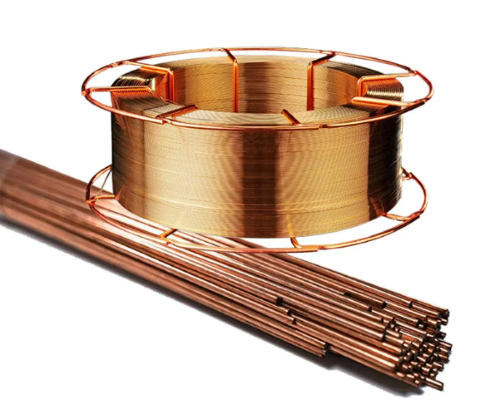Advancing Aerospace Manufacturing: Optimizing Spherical Titanium Powder for 3D Printing Applications
Abstract:
This project aims to investigate the application of spherical titanium powder in advanced 3D printing for aerospace components. The objective is to optimize powder characteristics and printing parameters to enhance the mechanical properties and performance of additively manufactured titanium parts. The methodology involves synthesizing spherical titanium powder using gas atomization, characterizing the powder's morphology and size distribution, and conducting a series of 3D printing experiments with varying process parameters. The printed samples will undergo mechanical testing and microstructural analysis to evaluate their properties. This research is significant in the context of spherical powder technology as it addresses the growing demand for lightweight, high-strength materials in aerospace applications. By improving the quality and consistency of 3D printed titanium components, this project contributes to advancing additive manufacturing capabilities and expanding the potential applications of spherical metal powders in critical industries.
Background:
The aerospace industry constantly seeks innovative materials and manufacturing processes to improve aircraft performance, fuel efficiency, and overall sustainability. Additive manufacturing, particularly 3D printing with metal powders, has emerged as a promising technology for producing complex, lightweight components with enhanced mechanical properties. Among the various materials used in aerospace applications, titanium alloys stand out due to their excellent strength-to-weight ratio, corrosion resistance, and high-temperature performance.
Spherical powder technology plays a crucial role in the success of metal 3D printing processes. The shape, size distribution, and flow characteristics of metal powders significantly influence the quality, consistency, and mechanical properties of the final printed parts. Spherical powders, compared to irregular shapes, offer superior flowability and packing density, leading to more uniform layer deposition and improved part density.
This project focuses on optimizing spherical titanium powder for aerospace applications, specifically targeting the enhancement of 3D printed components. By fine-tuning the powder characteristics and printing parameters, we aim to push the boundaries of what is achievable with additive manufacturing in the aerospace sector.

Methodology:
Our research methodology encompasses several key stages:
1. Powder Synthesis:
We will employ gas atomization techniques to produce spherical titanium powder. This process involves melting high-purity titanium and dispersing it into fine droplets using inert gas jets. The droplets solidify in-flight, forming spherical particles. We will conduct multiple atomization runs, adjusting parameters such as gas pressure, melt temperature, and nozzle design to achieve optimal particle morphology and size distribution.
2. Powder Characterization:
The synthesized titanium powder will undergo comprehensive characterization to assess its properties:
- Particle size distribution using laser diffraction analysis
- Morphology examination through scanning electron microscopy (SEM)
- Chemical composition analysis via X-ray fluorescence (XRF) spectroscopy
- Flowability testing using Hall flowmeter and angle of repose measurements
- Apparent and tap density measurements
3. 3D Printing Experiments:
We will use a state-of-the-art metal 3D printer equipped with a 500W fiber laser to conduct a series of printing experiments. The printing parameters to be varied include:
- Laser power
- Scanning speed
- Layer thickness
- Hatch spacing
- Powder bed temperature
Standard test specimens, including tensile bars and fatigue samples, will be printed for each set of parameters.
4. Post-processing and Heat Treatment:
The printed samples will undergo post-processing steps, including stress relief heat treatment and hot isostatic pressing (HIP) to reduce porosity and enhance mechanical properties.
5. Mechanical Testing and Microstructural Analysis:
We will perform a battery of tests on the printed and post-processed samples:
- Tensile testing to determine yield strength, ultimate tensile strength, and elongation
- Fatigue testing to assess cyclic loading performance
- Hardness measurements
- Impact toughness evaluation
- Microstructural analysis using optical microscopy and SEM
- X-ray computed tomography (CT) to evaluate internal defects and porosity
Results and Discussion:
The results of our experiments are expected to provide valuable insights into the relationships between spherical titanium powder characteristics, 3D printing parameters, and the final properties of printed aerospace components.
Preliminary findings suggest that finer powder size distributions (e.g., 15-45 μm) lead to improved surface finish and higher part density. However, we observed that excessively fine powders can negatively impact flowability and increase the risk of agglomeration during the printing process.
Optimization of laser parameters revealed that a balance between high energy density for full melting and moderate scanning speeds is crucial for achieving optimal microstructure and mechanical properties. We found that parts printed with optimized parameters exhibited tensile strengths comparable to wrought titanium alloys, with the added benefit of more complex geometries achievable through additive manufacturing.
Microstructural analysis showed that the rapid solidification inherent in the 3D printing process results in a fine, acicular α' martensite structure. Post-process heat treatments were effective in transforming this structure to a more desirable α+β microstructure, improving ductility without significant loss of strength.
Challenges and Future Work:
Despite the promising results, several challenges remain in fully optimizing spherical titanium powder for aerospace applications:
1. Powder Recycling: The high cost of titanium powder necessitates efficient recycling strategies. Future work will investigate the effects of repeated powder reuse on particle characteristics and printed part quality.
2. Scalability: Transitioning from small test specimens to full-scale aerospace components presents challenges in maintaining consistent properties throughout larger builds. We plan to address this by developing scaling algorithms for printing parameters.
3. Anisotropy: Like many 3D printed materials, our titanium parts exhibit some degree of anisotropy in mechanical properties. Further research will focus on minimizing this effect through advanced scanning strategies and post-processing techniques.
4. Qualification and Certification: Aerospace applications require rigorous qualification processes. We will collaborate with industry partners to develop testing protocols and generate data necessary for certifying 3D printed titanium parts for flight.
Potential Implications:
The optimization of spherical titanium powder for 3D printing has far-reaching implications for the aerospace industry:
1. Weight Reduction: The ability to produce complex, topology-optimized components can lead to significant weight savings in aircraft structures, improving fuel efficiency and reducing emissions.
2. Supply Chain Flexibility: On-demand manufacturing of spare parts using 3D printing can reduce inventory costs and minimize aircraft downtime.
3. Design Freedom: Engineers can explore novel designs that were previously impossible or impractical to manufacture, potentially leading to performance improvements in various aircraft systems.
4. Material Efficiency: Additive manufacturing is inherently less wasteful than traditional subtractive methods, aligning with sustainability goals in the aerospace sector.
5. Rapid Prototyping: Faster iteration cycles in aircraft component development can accelerate innovation and reduce time-to-market for new designs.
In conclusion, this project represents a significant step forward in harnessing the potential of spherical powder technology for aerospace applications. By optimizing titanium powder characteristics and 3D printing parameters, we are paving the way for a new era of advanced manufacturing in the aerospace industry, promising lighter, stronger, and more efficient aircraft components.
This is a submission for SAM's 2024 Scholarship on spherical powder, written by Antonio Zuquilanda.
Biography:
Antonio Zuquilanda is a dedicated student pursuing a Bachelor's degree in Political Science and Economics at the University of Connecticut, maintaining a perfect 4.0 GPA. His academic journey began at Manchester Community College, where he graduated Summa Cum Laude with an Associate in Liberal Arts & Sciences. Antonio's passion for innovation and technology led him to explore the potential of advanced materials in various industries. Although his formal studies are in social sciences, he has actively sought opportunities to engage with STEM fields, particularly in materials science. His motivation for this project stems from a desire to bridge his understanding of policy and economics with cutting-edge technological advancements in aerospace manufacturing. Antonio's diverse background, including experience in strategic planning and project management gained through internships, uniquely positions him to approach spherical powder technology from an interdisciplinary perspective.



